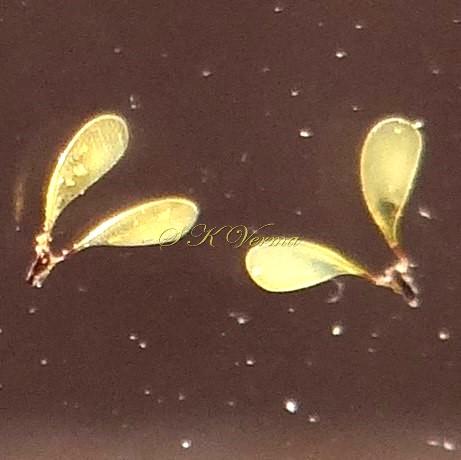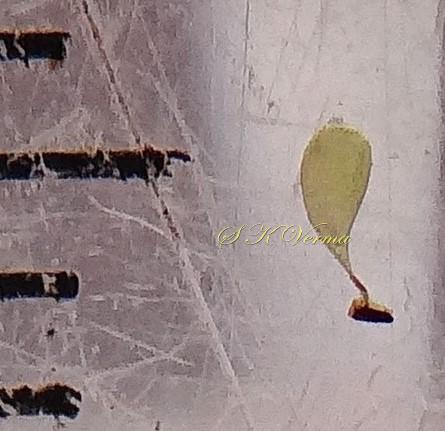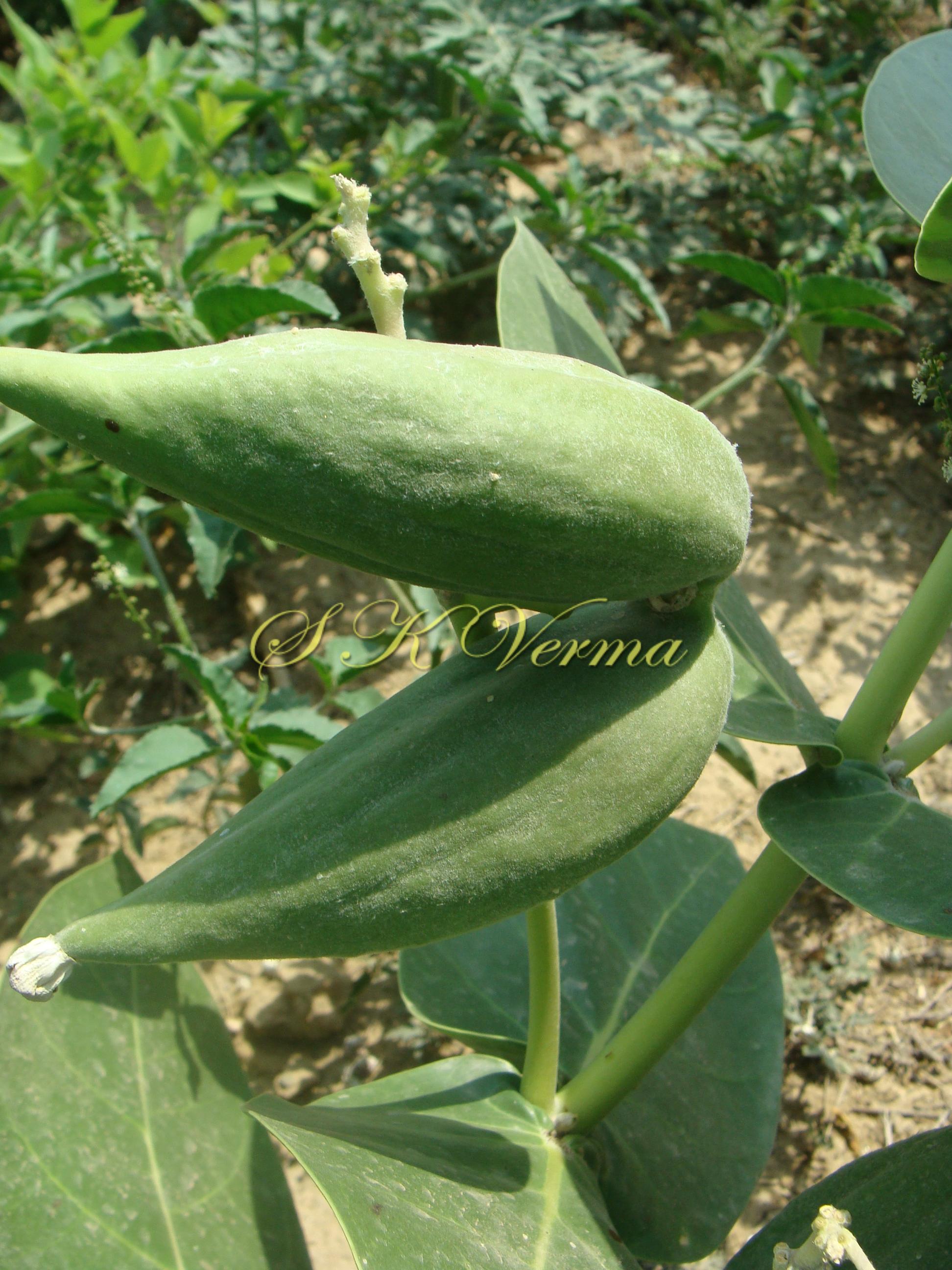CALOTROPIS
Calotropis
R. Br., Asclepiadeae: 28. 1810; Hook. f., Fl. Brit. India 4: 17. 1885; Boiss., Fl. Or. 4: 57. 1879; Cooke, Fl. Pres. Bomb. 2: 214. 1904; Parker, For. Fl. Punj. ed. 3:340. 1956; Fl. China @ eFloras.org 16: 202; Ali, Fl. Pak. @ eFloras.org p. 6.
Erect shrubs or small trees, canescent. Leaves large, opposite decussate, somewhat fleshy. Flowers in terminal or axillary umbelloid cymes, long pedunculate. Calyx deeply 5-lobed. Corolla 5-lobed, lobes free about for ca. 2/3 of the way or less, tips usually purple. Corona of 5 fleshy laterally compressed lobes radiating from the gynostegium, each with a recurved vesicle at base and a pair of auricles at apex. Anthers short and broad with a solitary pendulous pollinium in each cell. Stigma broad, pentagonal (Gynostegium). Follicles inflated with an air sac around the seed producing region. Seeds comose.
3 species
Calotropis procera
Calotropis procera
(Aiton) W.T. Aiton, Hortus Kew. 2: 78. 1811; Parker, For. Fl. Punj. ed. 1:342. 1918 (Reprint 1973); Hook. f., Fl. Brit. India 4: 18. 1885; Collett, Fl. Siml. Ed. 2: 315. 1921 (Reprint 1980); Sharma & Kachroo, Fl. Jammu (Illustr.) 2: t. 168. 1983; Kaur & Sharma, Fl. Sirmaur 425. 2004; Singh & Sharma, Fl. Chamba Dist. 463. 2006; Fl. China @ eFloras.org 16: 202; Ascepias procera Ait., Hort. Kew 1: 305. 1789.
An erect shrub, 90-120 cm high, young plants clothed with white cottony tomentum. branching from near the base, branches terete, white-tomentose. Leaves opposite, 5-16 cm x 3.7-10 cm, subsessile, broadly ovate, ovate-oblong, elliptic or obovate, margin entire, base more or less deeply cordate, apex abruptly acute or short acuminate, dull-green, thick, fleshy, glabrous or so adaxially, white-tomentose abaxially. Inflorescence umbellate cymes with 3-10 flowers; peduncle axillary, stout, 5-12 cm long. Flowers ca. 2.5 cm across, white outside, purple within, scented, tomentose when young becoming gradually glabrous; flower buds globose; pedicels 1.2-3 cm long. Calyx divided to base; lobes 5, ca. 5 mm x 3 mm, acute, ovate. Corolla campanulate,1.5-2 cm in diameter and 1-1.2 cm long, glabrous, divided 2/3rd the way down; tube very short; lobes 5, 7-10 mm x 6-10 mm, erect, ovate or ovate triangular, acute, white outside and inside purple towards tip and white at base, valvate in bud. Corona equalling or exceeding staminal column, of 5 fleshy, laterally compressed processes adnate to and radiating from the staminal column, base of each process produced into an upcurved, involute spur, the apex bifid, obliquely truncate. Stamens 5, inserted at base of corolla and alternate with its lobes; filaments united in a short fleshy column around the ovary, apex of staminal column united to much dilated stigma forming the stigmatic disc or gynostegium; anthers bithecous (2-celled), short and broad, with broad short membranous inflexed appendages, coherent around the stigmas; pollens of each cell united in waxy pollen masses, the pollinia, pollinia pendulous in cells; pollinia of the adjoining cells of two contiguous anthers united in pairs by horny appendages (caudicles) to black dot-like glands, the corpusculum lying at the angles of stigmatic disc; two pollinia with caudicles and corpusculum form the Translator Apparatus acting as a means of pollen dispersal by insects. Carpels 2, apocarpous; ovaries 2, free, enclosed within staminal column, superior, unilocular, ovules many on marginal placentas; styles 2, free, united into stigma; stigma large, pentagonal, flat, depressed. Follicles 7-10 cm x 5-8 cm, double, recurved, obliquely ovoid, inflated, smooth; pericarp spongy. Seeds 1 cm long, broadly ovate, flat, minutely tomentose, light brown; coma silky, +/- 3.7 cm long.
Common Names: Ak, Mundar
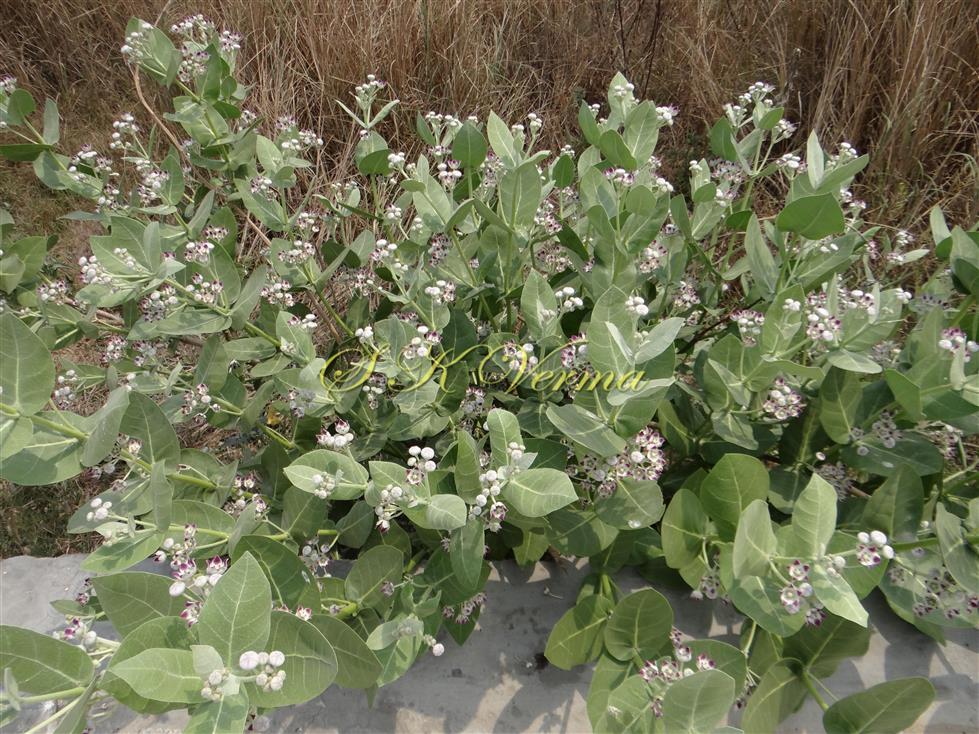
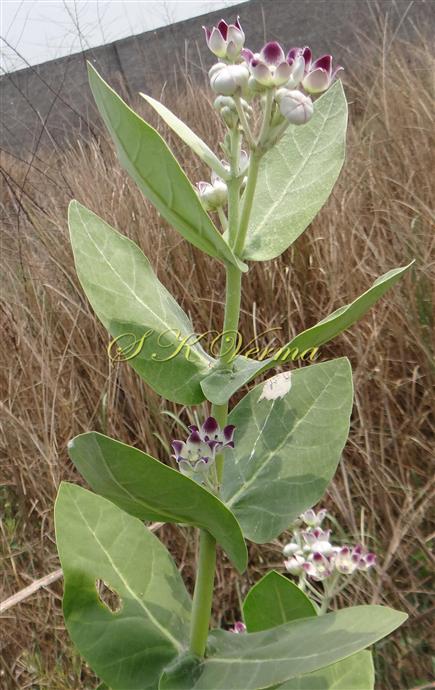


-DSC0206.jpg)
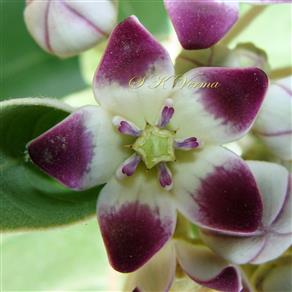
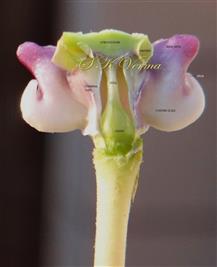
 with calyx and corolla-DSC01519.jpg)
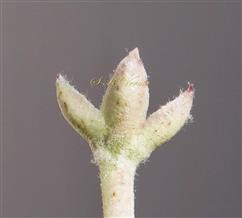
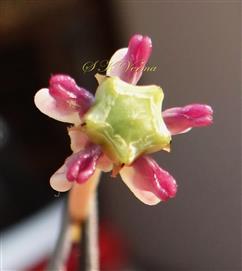
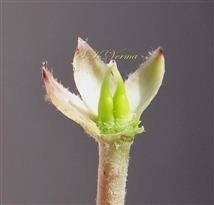
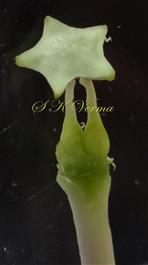



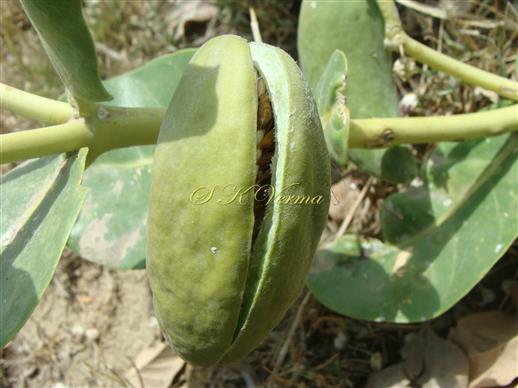
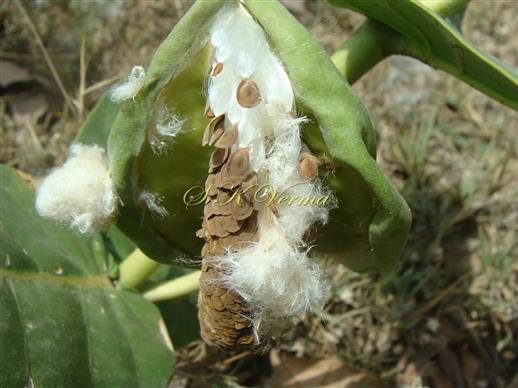





-DSC0206.jpg)


 with calyx and corolla-DSC01519.jpg)




